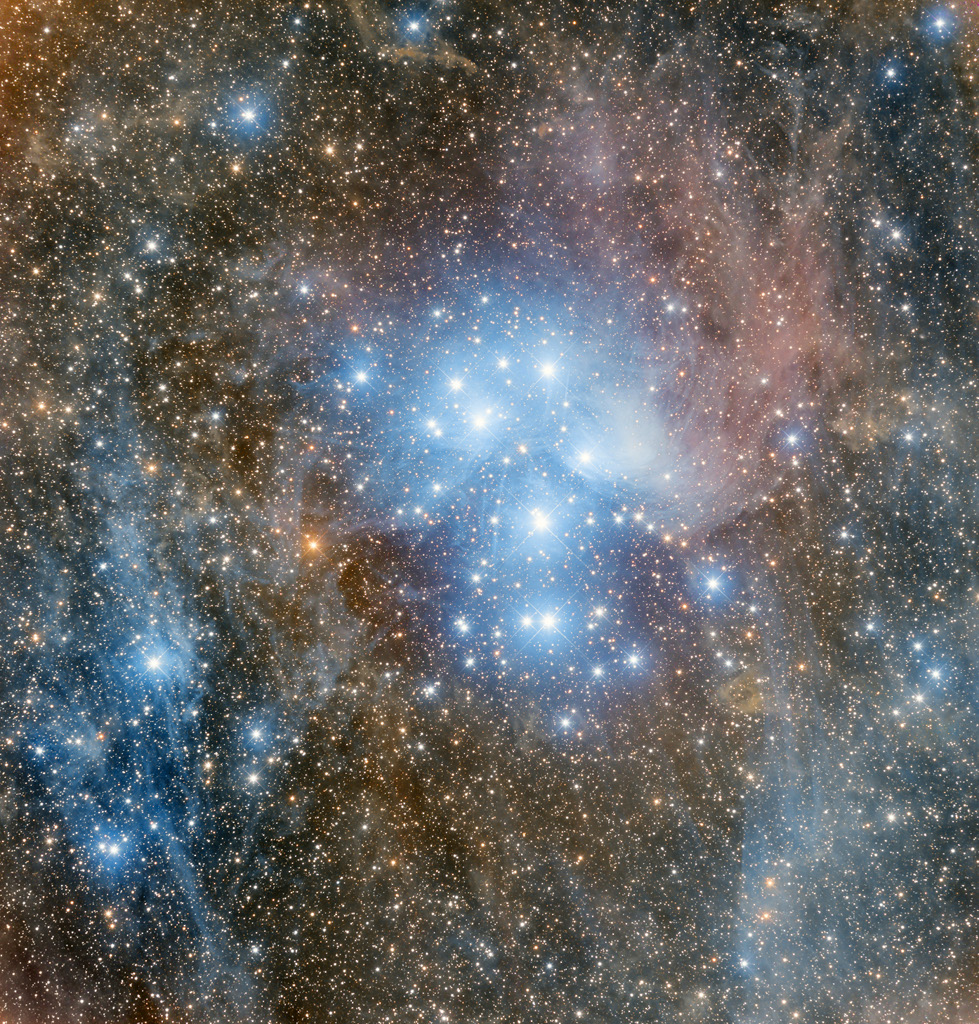2019 November 7
Messier 45: The Daughters of Atlas and Pleione
Image Credit & Copyright: Adam Block, Steward Observatory, University of Arizona
Explanation: Hurtling through a cosmic dust cloud a mere 400 light-years away, the lovely Pleiades or Seven Sisters open star cluster is well-known for its striking blue reflection nebulae. It lies in the night sky toward the constellation Taurus and the Orion Arm of our Milky Way Galaxy. The sister stars and cosmic dust cloud are not related though, they just happen to be passing through the same region of space. Known since antiquity as a compact grouping of stars, Galileo first sketched the star cluster viewed through his telescope with stars too faint to be seen by eye. Charles Messier recorded the position of the cluster as the 45th entry in his famous catalog of things which are not comets. In Greek myth, the Pleiades were seven daughters of the astronomical titan Atlas and sea-nymph Pleione. Their parents names are included in the cluster’s nine brightest stars. This deep and wide telescopic image spans over 20 light-years across the Pleides star cluster.
M45:阿特拉斯与普勒俄涅的女儿们
影像来源与版权:Adam Block, Steward Observatory, University of Arizona
说明:美丽的昴宿星团(七姐妹疏散星团)以其引人注目的蓝色反射星云而闻名,它急速穿过仅400光年远的宇宙尘埃云。它位于夜空中金牛座方向、我们银河系的猎户臂上。七姐妹星和宇宙尘埃云并无关联,它们只是恰好穿过同一片天区。自古以来,人们就认为它是一个致密的恒星群,伽利略首先用望远镜勾勒出了星团的轮廓,而这些恒星太过黯淡,我们无法用肉眼看到。查尔斯.梅西耶记录了这个星团的位置,将它编录为其著名非彗星星表中的第45个天体。在希腊神话中,昴宿星是泰坦阿特拉斯与海仙女普勒俄涅的七个女儿,它们父母的名字包含在星团内最亮的九颗恒星中。这幅深广的望远镜影像覆盖了昴宿星团内超过20光年的天区。







